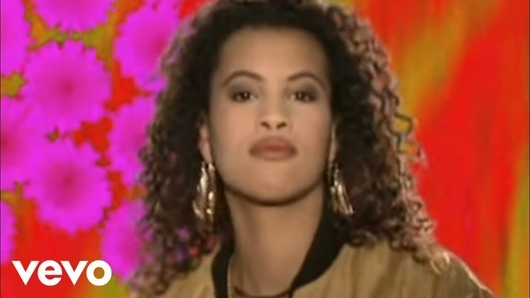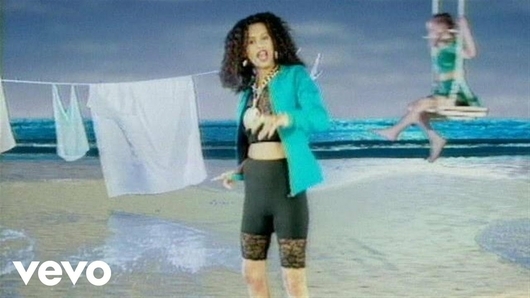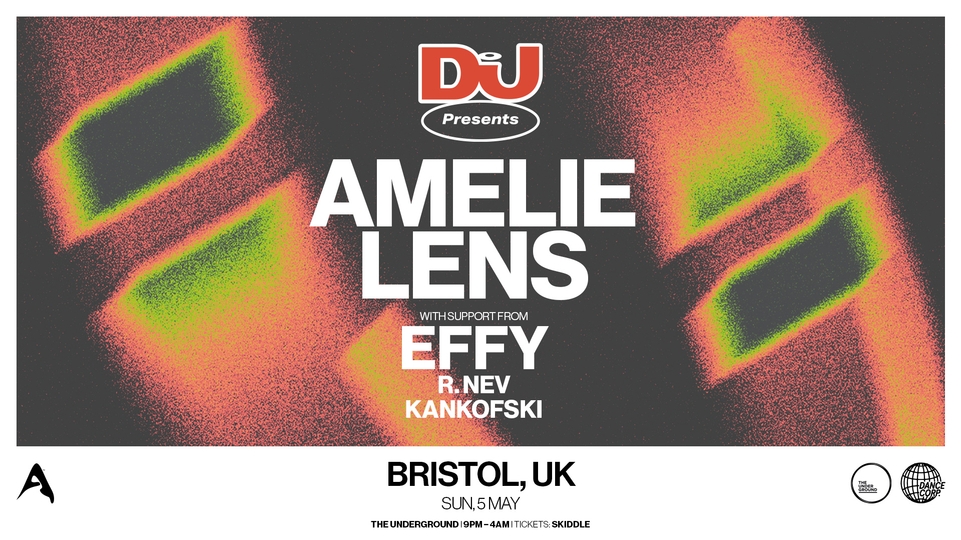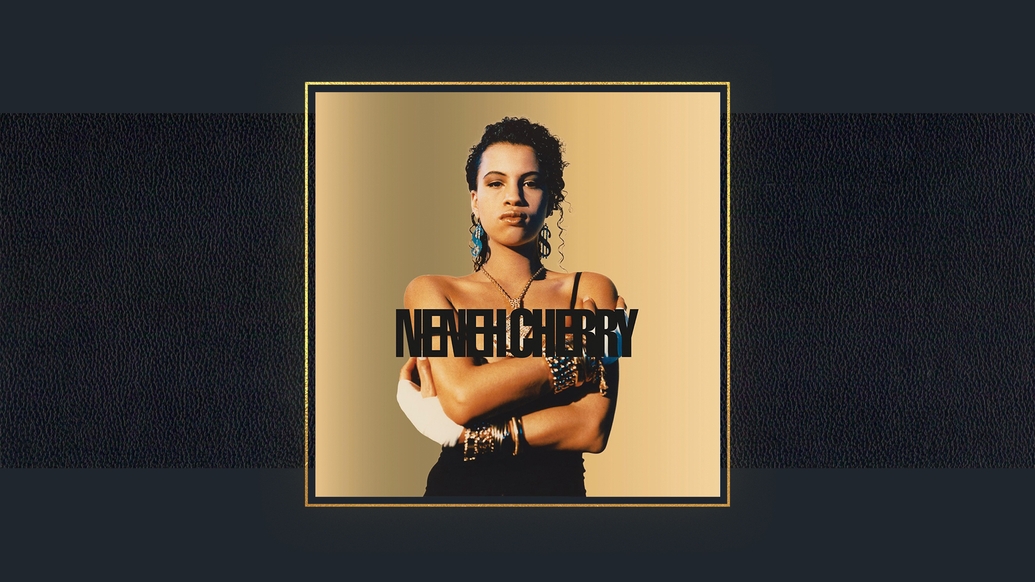
How Neneh Cherry's 'Raw Like Sushi' became a benchmark for collective creative freedom
Neneh Cherry’s 1989 debut LP, featuring beloved tracks like ‘Buffalo Stance’ and ‘Manchild’, was the product of both a bohemian free thinker and a groundbreaking musical collective. Here, Ben Cardew explores how Cherry's introduction to the world told an an inspiring tale of collaborative creative freedom, and blazed a trail for the influential Bristol sound of the '90s
You know those moments in Hollywood films where the camera pans back to reveal the character who, unbeknownst to the viewer, has been at the centre of everything? Sometimes Neneh Cherry's career feels like that. From punk to hip-hop, street soul to house, Cherry has been involved in it all over the last four decades, her catalogue like a spider’s web of connections, where the greatest talent of the ’80s, ’90s, and beyond hook up.
Cherry’s life, in itself, feels like a work of art. She is the daughter of Swedish painter Monika “Moki” Karlsson and Sierra Leonean drummer Ahmadu Jarr, and the stepdaughter of legendary American jazz trumpeter Don Cherry. At 14, she dropped out of school and moved to London, then in thrall to punk rock; there she connected with The Slits, who had previously toured with her stepfather, and ended up living in a squat with the band’s singer Ari Up. She briefly joined the band, and played with various others, including The Cherries, New Age Steppers, and Rip Rig + Panic, a post-punk outfit that included two members of acclaimed Bristol act, The Pop Group.
In 1987, Cherry met producer Cameron McVey, who would go on to become both her husband and a hugely important part of her career. McVey was, at the time, part of the duo Morgan-McVey with vocalist Jamie Morgan. Their debut — and only — single, ‘Looking Good Diving’, released later that year, came with an alternative take on the B-side, featuring vocals from Cherry, called ‘Looking Good Diving With The Wild Bunch’. The track then evolved to become ‘Buffalo Stance’, Cherry’s debut single.
‘Looking Good Diving With The Wild Bunch’ is an interesting song, with the seeds of ‘Buffalo Stance’, including Cherry’s rap and the bubbling keyboard riff, in place. But it would probably have remained a B-side had another key character in British dance music not intervened, in the shape of Tim Simenon, aka Bomb The Bass, who was then riding high on the success of acid house classic ‘Beat Dis’. Simenon told Morgan that he was interested in re-working ‘Looking Good Diving With The Wild Bunch’; Morgan passed on the message to Virgin, where Cherry had signed, and the result was one of the most vital singles of the 1980s.
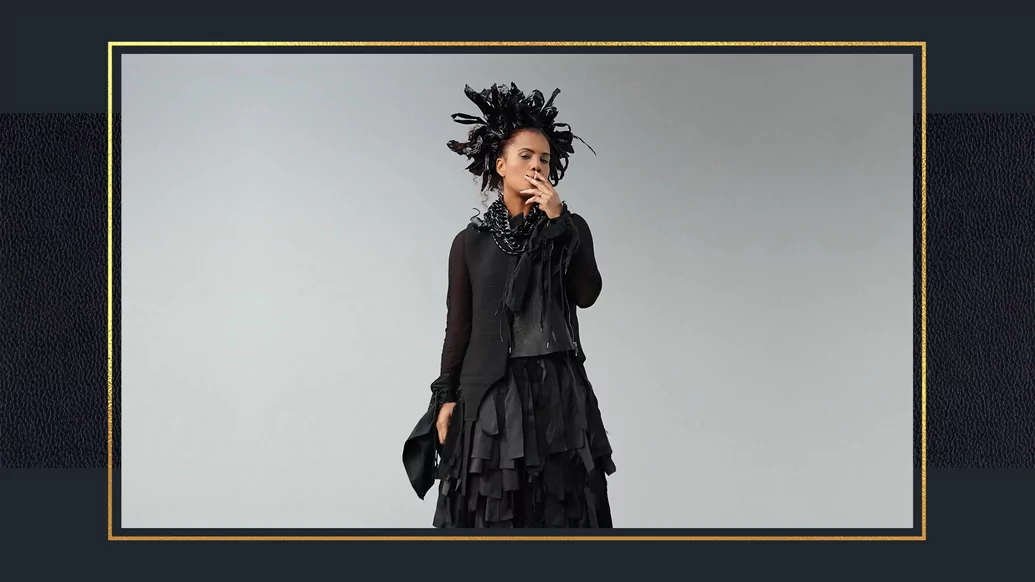
“If you want to know where the Bristol scene that would go on to rule the ’90s started, ‘Raw Like Sushi’ is key, with the record helping to nurture some of the maverick talents that would later make Bristol one of the world’s most vibrant music cities, some two years before Massive Attack dropped ‘Blue Lines.’”
‘Buffalo Stance,’ which was released in November 1988, has the rare distinction of sounding both perfectly of its time and incredibly unique. The lyrics are a tale of defiance, the ‘Buffalo Stance’ being a pose to protect against "gigolos and moneymen", delivered in a tone of sheer rebellious cheek, while the music is an idiosyncratic mixture of vinyl scratches, a lilting saxophone sample, rave-inspired keyboard lines, and beats that sit somewhere in between hip-hop, house, and freestyle.
There’s tenderness, too, in Cherry’s voice, not to mention a godawful — but very funny — Cockney accent, so strained it would get an eye roll from Dick Van Dyke. ‘Buffalo Stance’ took influences from a lot of things at the time — the drum-machine-driven UK street soul sound, Soul II Soul’s early singles, Madonna’s dancier moments, new jack swing, and ‘Beat Dis’, among them — but its ingenious musical fusions meant it didn’t sound quite like any of them when it exploded off the radio in late 1988, on its way to becoming a worldwide hit.
Cherry’s next single would be further proof of both her vast songwriting talent and her ability to nurture promising young talent. ‘Manchild’, which was released in May 1989, was the first song Cherry ever sat down to write, using the autochord function on a Casio keyboard to create a chilling tale of male immaturity, underachievement, and busted dreams. Nellee Hooper, then a fledgling producer for Soul II Soul, provided a beat, Massive Attack’s Robert Del Naja contributed to the rap, and Cameron McVey helped to shape the song into its ultimate form. (Massive Attack themselves would also contribute a remix to the single release, as would Bristol breakbeat pioneers Smith & Mighty.)
Once again, the song sounded truly distinctive. Sure, there were elements of Soul II Soul, hip-hop, and contemporary R&B to ‘Manchild’, but Cherry’s songwriting was strikingly original, using seven chords in the song’s verse, where most pop songwriters rarely go beyond three (Don Cherry apparently was impressed). The string arrangement, meanwhile, nodded to where Massive Attack would soon go on their own debut album, ‘Blue Lines’. The song’s subject matter and tone were fascinating, too: how many tracks in 1989 dared to make such a devastating critique of male ego? And how many could do it with the beguiling mixture of tenderness and despair that Neneh Cherry evoked, the song’s few moments of major-chord hope quickly subsumed by murky waves of sadness?
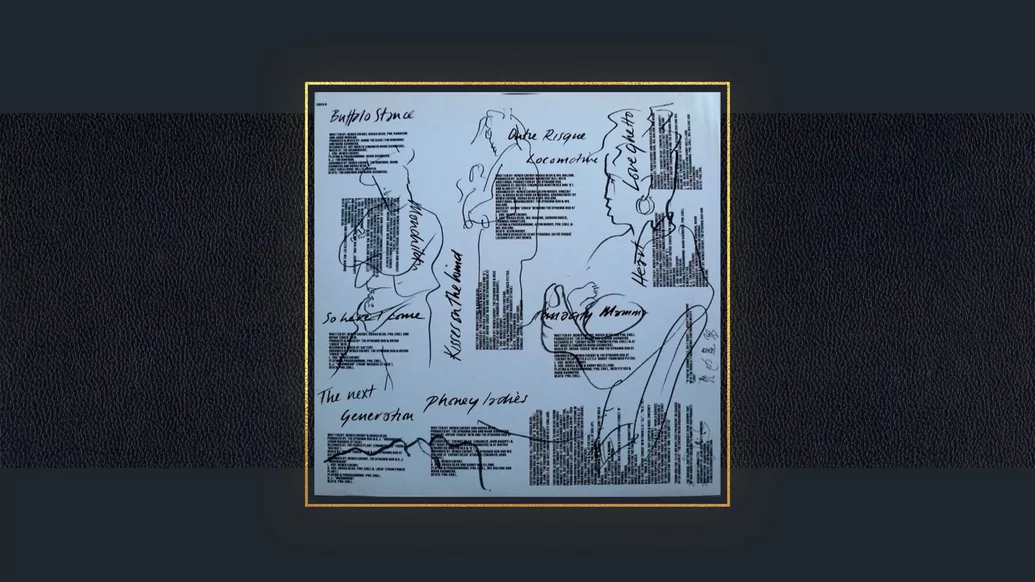
‘Raw Like Sushi’, Cherry’s debut album, was released in June 1989 with ‘Manchild’ high in the UK charts. Again, Cherry had assembled a crack team: production came from McVey, Jonny Dollar (who would later work extensively with Massive Attack), and Mark Saunders, a key collaborator on Tricky’s ‘Maxinquaye’. Nellee Hooper provided arrangements; Tim Simenon brought beats; and Mushroom, from Massive Attack, contributed scratches and programming, making the record a virtual who’s who of 1980s UK street soul.
If you want to know where the Bristol scene that would go on to rule the ’90s started, ‘Raw Like Sushi’ is key, with the record helping to nurture some of the maverick talents that would later make Bristol one of the world’s most vibrant music cities, some two years before Massive Attack dropped ‘Blue Lines.’ But all this would mean little if the music on ‘Raw Like Sushi’ wasn’t so brilliantly innovative. While the record’s production situates it at the tail-end of the ’80s — absolutely no bad thing, for fans of ’80s R&B, hip-hop, and early house — its free-thinking, globe-trotting attitude makes ‘Raw Like Sushi’ feel like a very modern record.
This is a record by a Swedish artist, recorded in the UK and US with a crew of (mostly) English producers that manages to incorporate myriad global styles: Spanish-language dialogue, Latin dance and salsa feel (‘Kisses On The Wind’); the freshest new jack shuffle (‘Inna City Mama’); a fierce ‘Apache’ drum break and scratched jazz samples (‘The Next Generation’); slick and sensual synth-pop (‘Love Ghetto’); James Brown-powered swingbeat (‘Outré Risqué Locomotive’); flying funk from DJ Jazzy Jeff & The Fresh Prince producer Bryan ‘Chuck’ New (‘So Here I Come’), and a sassy rap face-off with Birmingham MC Gilly G (‘My Bitch’).
‘Raw Like Sushi’ is full of many different things: fantastic pop hooks, flavourful vocals, fresh attitude, and exploratory spirit. But the key lies in its liberty. You can’t imagine anyone setting out to make a record like ‘Raw Like Sushi', much less being told to do so; it’s too freewheeling and loose, an expression of musical love that feels in line with the radical cultural mix of Bristol at the time. This was a city where local sound system The Wild Bunch — who counted Massive Attack and Nellee Hooper among its members — were known for mixing punk, R&B, and reggae, while Rip Rig & Panic added jazz skronk to post-punk guitars.
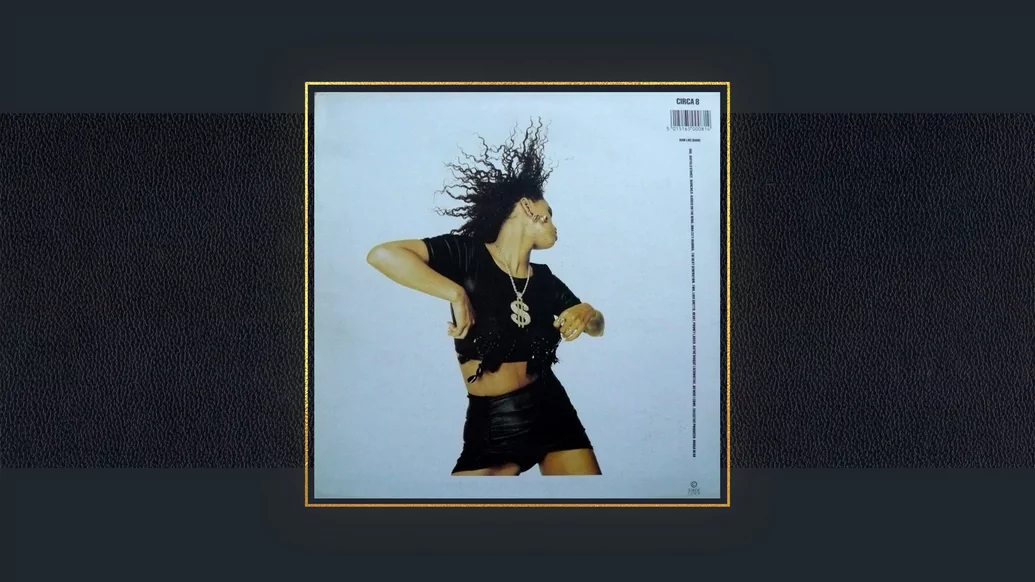
“While the record’s production situates it at the tail-end of the ’80s — absolutely no bad thing, for fans of ’80s R&B, hip-hop, and early house — its free-thinking, globe-trotting attitude makes ‘Raw Like Sushi’ feel like a very modern record.”
Neneh Cherry, as she has shown throughout her career, isn’t someone for finite musical thinking; and the success of ‘Buffalo Stance’ (which opens ‘Raw Like Sushi’, followed by ‘Manchild’) allowed her to follow her whims on her debut album. “When I think of what we did and how we did it back then, we were just kind of quite free to do as we pleased,” Cherry told Billboard in 2020. “We were obviously tapping into the stuff that we were listening to, like a lot of the hip-hop coming out of New York. We always had this pop structure in the back of our minds, but our aim was to deconstruct the idea of what a pop song is by adding in a hip-hop beat with strings or combining sounds and attitudes that weren’t necessarily the norm. It felt like the obvious thing for us to try and do.”
As such, ‘Raw Like Sushi’ marks another key moment in the back and forth between US and European music. Cherry and her various collaborators were inspired by American (and Jamaican) musicians. But they didn’t want to recreate the sounds they were hearing. They wanted to re-model them, to make hip-hop, R&B, soul, and house in their own punky image. “Jimmy Jam and Terry Lewis were really scoring gold and their songs were everywhere back then,” Cherry told Billboard. “They were the kind of producers we were wishing that we could maybe work with one day. But then it was like, in a way, we were also deconstructing that style and making it our own and turning it into something more punk in a way. That’s the beauty of the kind of DIY aspect of rap or jazz or punk. It’s about engineering your own universe and telling your own story.”
And what a story ‘Raw Like Sushi’ would tell: An inspiring, liberating tale of the strength of community and collective music inspiration, driven by a bohemian free thinker, one that would blaze a trail for British music for years to come, a Bristol finishing school for punks, freaks, and beautiful soul weirdos that became a global musical force.
